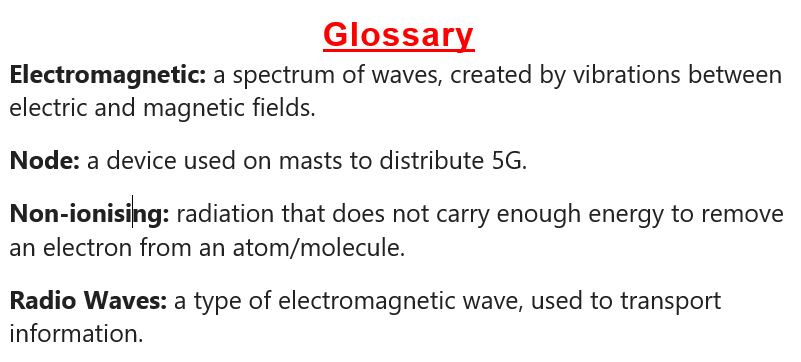There’s a 5G mast planned for Swansea student Alice Wills’ home town. There has been considerable controversy and resistance to the installation, and here Alice explores the whole idea of 5G, and whether it’s really going to bring anything good…
Life in the countryside can be slow – in more ways than one. Here on Dartmoor, patchy phone signals and sloth-like download speeds have only got worse as we have all been “Working From Home”. One solution is 5G, but is it really necessary for rural towns?
How does 5G work?
5G sends information through a series of high-frequency radio waves. For those rusty on their GCSE Physics, radio waves sit on the lower end of the electromagnetic spectrum, meaning their non-ionising radiation is less dangerous than direct sunlight.
5G uses wavelengths of between 30 and 300 gigahertz – a colossal step-up compared to the 6 GHz used by 4G. Yet, this limits its reach to just 1,500ft.

The Benefits
Many benefits of 5G – such as driverless cars and delivery drones – are a distant dream for those of us still deprived of Deliveroo. But, contrary to popular belief, the countryside is not exclusively composed of technophobes. We should have access to the same technology as our urban counterparts.
Working From Home lifestyle has highlighted local connectivity problems, and these issues require significant infrastructural improvements which 5G could address. It has also highlighted the importance of online health care: with NHS cutbacks closing many cottage hospitals over the last decade, people in remote areas must travel further for treatment. 5G could provide better access to services without the need to travel, reducing the isolation felt in rural areas.

The Drawbacks
Although many worry about its danger to human welfare, the World Health Organisation does not expect 5G will have any consequences on public health.
But this doesn’t mean it’s the most effective option: their high-frequency waves cover a smaller area than their 4G predecessor. Coupled with the sparse layout of many rural towns, we would need more 5G nodes to cover the same number of houses as in urban areas. For perspective, Michelle Yan Huang notes the 1,500ft reach means we need 5G nodes on “every lamppost, traffic light, etc.” as ‘“even trees can block 5G signals.” If this is necessary even in urban areas, the amount needed for reliable coverage in rural areas must be innumerable.
Surely it would be cheaper and more appropriate to improve existing means of connectivity, such as extending fibre-optic broadband? Not only would it remove the need to seek planning permission for individual sites, but the technology already exists in rural towns. The only issue is fibre-optic tech often still relies on lower-quality copper wires from the main supply box into houses which eradicates the benefits of superfast broadband.
It is therefore simpler for tech companies to ensure current connectivity measures are brought up to speed, and they should prioritise these before unveiling less suitable technology.

So do we actually need 5G in rural areas?
5G is not a pressing concern for rural towns. Despite benefits to providing services such as digital health care, minor improvements to existing connectivity options would provide the same. 5G is not even fully reliable in densely populated urban areas yet, so the focus should be on providing technology that suits the unique demands of remote areas.
Not that 5G won’t ever be necessary here: tech companies are already working to extend 5G’s reach, so we will reach a point when it would be worth installing the tech.
With few people benefitting from the unlimited capacity that it offers, 5G is not the answer to our connectivity conundrum. We need improvements to our current connectivity options instead, and it’s time we received the attention and development we deserve.